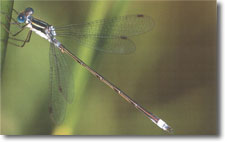 |
| Quran | Audio | Video | Miracles | Articles | Manuscripts | Webmasters | Contact |
 |
BIOMIMETICS: DRAWING INSPIRATION FROM THE DESIGN IN LIVING THINGS
This approach has given birth to biometrics, a new branch of science that seeks to imitate living things. In recent times, this branch of science has come to be widely applied in the world of technology. The use of the word "ibratan," (to learn from, advice, importance, important thing, or model) in the above verses is most wise in this regard. Biomimetics refers to all of the substances, equipment, mechanisms, and systems that people produce in order to imitate the systems present in nature. The scientific community currently feels a great need for the use of such equipment, particularly in the fields of nanotechnology, robot technology, artificial intelligence, medicine, and the military. Biomimicry was first put forward by Janine M. Benyus, a writer and scientific observer from Montana. This concept was later analysed by many other people and began to find applications. Some of the comments made regarding biomimicry are as follows:
David Oakey, product strategist for Interface Inc., a company that uses nature to increasing product quality and productivity, says:
Scientists who began to favour this rapidly spreading idea accelerated their studies by using nature's incomparable and flawless designs as models. These designs represent models for technological research, for they provide the maximum productivity for the least amount of materials and energy, and are self-maintaining, environmentally friendly, silent, aesthetically attractive, resistant, and long-lasting. The High Country News newspaper described biomimetics as "a scientific movement" and made the following comment:
Janine M. Benyus, who believed that models in nature should be imitated, gave the following examples in her book, Biomimicry: Innovation Inspired by Nature (Perennial: 2002):
These astonishing mechanisms and designs in nature, of which we have cited only a few, have the potential to enrich technology in a wide range of fields. This potential is becoming ever more obvious as our accumulated knowledge and technological means increase. All animals possess many features that amaze human beings. Some have the ideal hydrodynamic shape that allows them to move through water, and others employ senses that appear very foreign to us. Most of these are features that researchers have encountered for the first time, or, rather, that they have only recently discovered. On occasion, it is necessary to bring together prominent scientists from such fields as computer technology, mechanical engineering, electronics, mathematics, physics, chemistry, and biology in order to imitate just one feature of a living thing. Scientists are amazed when confronted with the incomparable structures and systems they are discovering with every passing day, and use that amazement to inspire themselves to produce new technologies for humanity's benefit. Realising that the existing perfect systems and extraordinary techniques applied in nature are far superior to their own knowledge and intellect, they became aware of these matchless solutions to existing problems and are now resorting to the designs in nature to resolve problems that have eluded them for years. As a result, they will perhaps achieve success in a very short time. Moreover, by imitating nature, scientists are making very important gains with regard to time and labour and also to the targeted use of material resources. Today we see the developing technology gradually discovering the miracles of creation and using the extraordinary designs in living things, as in the case of biomimetics, in the service of humanity. Benyus has stated that "'Doing it nature's way' has the potential to change the way we grow food, make materials, harness energy, heal ourselves, store information, and conduct business."149 The following are just a few of the many scientific papers to have considered such subjects: "Science is Imitating Nature,"150 "Life's Lessons in Design,"151 "Biomimicry: Secrets Hiding in Plain Sight,"152 "Biomimicry: Innovation Inspired by Nature,"153 "Biomimicry: Genius That Surrounds Us,"154 "Biomimetics: Creating Materials from Nature's Blueprints,"155 and "Engineers Ask Nature for Design Advice."156 In the nineteenth century, nature was imitated only in aesthetic terms. Artists and architects of that time were influenced by nature and used examples of the structures' external appearances in their works. Yet the realisation of nature's extraordinary designs and that these could be used to benefit human beings only began in the twentieth century with the study of natural mechanisms at the molecular level. Scientists today are learning from living things, as revealed in the Qur'an 1,400 years ago.
146. Frederick Pratter,
“Stories from the Field Offer Clues on Physics and Nature,”
Christian Science Monitor, www.biomimicry.org/reviews_text.html.
Source: www.miraclesofthequran.com [1/1/2009] |
|
|
 Before
scientists and research and development experts embark on new projects,
they usually look for models in living things and imitate their
systems and designs. In other words, they see and study the designs
created in nature by Allah and, inspired by these, go on to develop
their own new technologies.
Before
scientists and research and development experts embark on new projects,
they usually look for models in living things and imitate their
systems and designs. In other words, they see and study the designs
created in nature by Allah and, inspired by these, go on to develop
their own new technologies.